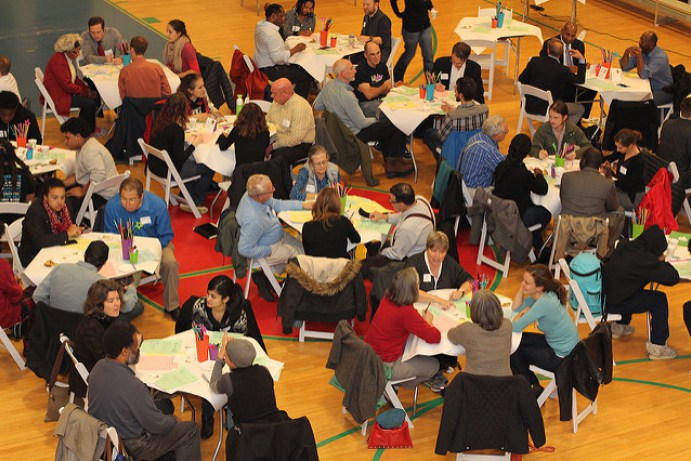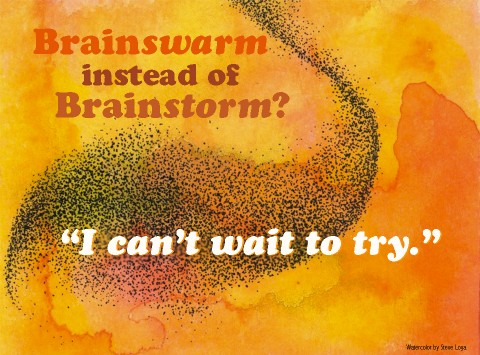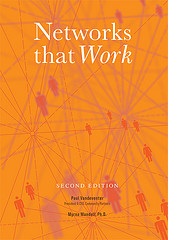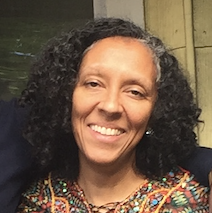Tag Archive: facilitation
March 10, 2017
“We never know how our small activities will affect others through the invisible fabric of our connectedness. In this exquisitely connected world, it’s never a question of ‘critical mass.’ It’s always about critical connections.”
Grace Lee Boggs
The past twelve months I had the pleasure of working with a team from Food Solutions New England to design and facilitate its first Network Leadership Institute. This initiative grew out of FSNE’s ongoing commitment to cultivating thought leadership and network leadership “to support the emergence and viability of a New England food system that is a driver of healthy food for all, racial equity, sustainable farming and fishing, and thriving communities.” Another impetus for the Institute was a year spent doing system mapping and analysis that revealed four leverage areas for advancing a just, sustainable and democratically-owned and operated regional food system, including cultivating and connecting leadership. Read More
February 2, 2017

This is a follow-up post to one from a few months ago focused on public engagement structures as important contributing factors to community resilience. The previous post ended by noting another important part of the engagement for resilience story is process.
For work we at IISC have done in a variety of communities, we have strived to ensure that public engagement processes are accessible, equitable, contribute to self-empowerment and community resilience, and get to other meaningful and desired outcomes. To this end, we have brought a number of process design considerations (see list below), all viewed through our collaborative change lens, which lifts up power, networks and love as central features to building real capacity for change. Read More
February 24, 2016
“Network entrepreneurs are keenly aware that they are few among many working across the larger system, and in this way they embody a special type of … leader[ship].”
– Jane Wei-Skillern, David Ehrlichman, & David Sawyer

Image from Taro Taylor – https://www.flickr.com/photos/tjt195/30916171
The concept of leadership has been undergoing an evolution. In this “network age” there appears to be both an expanding appreciation that leadership has always been about more than the singular heroic individual, and that going forward, leadership really must be much more of a shared endeavor.
In our collaborative consulting work at IISC, leadership (or what we often call Facilitative Leadership) is about “holding the whole,” thinking expansively about the state of a given complex system (community, economy, ecosystem, etc.) and paying attention to what will be required to ensure resiliency and/or change for more equitable and sustainable benefit. In these situations, the traditional top-down images of leadership fall far short.
Network leadership is at best a dynamic, diverse, more decentralized and multi-dimensional phenomenon. Many of those with whom we partner at IISC understand this implicitly, and we have found it important to help them be more explicit about this by clearly delineating the roles that leadership can embody in a collaborative/networked change endeavor. Read More
March 20, 2015

I have had many conversations recently about network form and transition, all of which have me thinking of what we often talk about in our practice at IISC: balancing acts. The core approach that informs our work in the world is Facilitative Leadership, which strives to create and inspire the conditions for collaborative and net work that yields greater, more sustainable and equitable change. In co-creating these conditions, as process designers, facilitators, trainers and coaches, we invoke a variety of practices and frameworks, each of which has its own dynamic range of considerations. Read More
January 29, 2015
“Our world is, to a very real extent, based on dialogue. Every action taken that involves more than one person arises from conversation that generates, coordinates and reflects those actions. Those actions have impact. If our human world is based on conversations, then the work of creating and supporting those conversations is central to shaping a world that works. Designing and conducting meetings and other groups sessions well is vital to determining our common future.”
– Group Works
 Just recently in work with a national network, we turned the corner to start creating a structure to channel the alignment it has achieved around core goals for system change and ultimately to realize “collective impact” in a particular domain. As we were kicking off some of the early discussions, someone asked what I thought were the keys to creating a successful network structure. That’s a huge question that merits a complex answer, and I’ll admit that in reflecting on the dozen or so large scale change efforts I’ve been a part of the past 7 or 8 years, the first thing that came to mind was – “really good facilitation.”
Just recently in work with a national network, we turned the corner to start creating a structure to channel the alignment it has achieved around core goals for system change and ultimately to realize “collective impact” in a particular domain. As we were kicking off some of the early discussions, someone asked what I thought were the keys to creating a successful network structure. That’s a huge question that merits a complex answer, and I’ll admit that in reflecting on the dozen or so large scale change efforts I’ve been a part of the past 7 or 8 years, the first thing that came to mind was – “really good facilitation.”
Simplistic as this response may sound I was thinking of lessons learned from numerous efforts that no beautiful or well thought out network/collaborative structure stands up to a lack of strong facilitative capacity (skillset, mindset, and heartset). To be more nuanced, it is not just facilitation that ultimately came to mind, but what we at IISC call facilitative leadership.
For over 20 years, IISC has been teaching, preaching and practicing Facilitative Leadership (FL), and in many ways it seems that this approach has never been riper in light of the burgeoning call to collaborate and cooperate across boundaries of all kinds. At its base, FL is about creating and inspiring the conditions for self-organization so that people can successfully achieve a common (and often evolving) goal. The logical question that follows is, “How does one ‘create and inspire’ these conditions?” The answer is found in a variety of practices derived from successful group work and that have indeed shown promise across different networks and large scale change efforts to create solid foundations and momentum for social change. Among them are these: Read More
November 21, 2014

It probably goes without saying that learning requires reflection. This holds true for individuals and groups, and yet what I find is that many collaborative efforts can fail to build adequate reflection time into their work. Often it seems that reflection can be cast aside in favor of “getting stuff done” and because, “There is so much to do!” And ironically, what can ensue is an overall and ongoing sense of impatience and frustration that “we aren’t doing anything or enough.” Experience shows that when people in networks and collaborative change work do pause to reflect, there is much value to be gained.
The other day I worked with the core team of a regional network focused on food system change, and we took time to reflect on what the past couple of years of work have yielded at individual, collective and systemic levels. People offered up their own reflections, as well as those garnered from informal interviews with others in the network. The result was eye-opening, affirming and provided a collective boost. What we agreed is that considerable and important development has occurred over time, including: Read More
July 10, 2014
“In spite of current ads and slogans, the world doesn’t change one person at a time. It changes as networks of relationships form among people who discover they share a common cause and vision of what’s possible.”
-Margaret Wheatley and Deborah Frieze (2006)

For the past two years, I’ve had the fortune of partnering with Carole Martin to create and deliver a network leadership development program for regional and economic development in “the north country” (northern NH, southern Quebec, eastern VT). This opportunity was made possible by funding from the Neil and Louise Tillotson Foundation and took the form of something we called the Community Practitioners Network (CPN). Subsequently, some of the members of the first cohort have taken to calling it the “Community Placemakers Network” (more on that another time).
One of the first steps Carole and I took in creating the program was to begin with a set of principles, which, in good network fashion, evolved over time. These principles guided our design and facilitation of the program as it emerged, and we offered them to and co-evolved them with the cohort as they considered how to bring them to their own leadership in their organizations, communities, and beyond. Here is a condensed version of the lastest iteration of the principles:
- Look for what is beyond the immediate sight lines and intersections – Part of the power of networks is emergence; expect and delight in the unexpected that comes from the meeting of different minds and perspectives.
- Design for serendipity – Don’t try to control and account for all outcomes. First of all, it’s impossible. Secondly, as Andrew Goldsworthy once said, “Too much control can kill a work.”
- Periphery, not (just) center – Network action is not simply about what is happening “in the room” but what transpires “after the meeting,” not what goes on at a “steering group” level, but what happens in two-sies and three-sies that form/partner/innovate “out there.”
- Process sometimes counts as action – Creating stronger connections and building alignment among network members/participants can be significant progress.
- We move at the speed of trust – Make time and space for trust to be built.
- Contribution before credential – Contributions are what count, and can come from anyone.
- Feed the network through questions so that it has a life of its own – Using inquiry can help to unlock network potential in the pursuit of unique and context-specific answers.
Always eager to hear others and how you have put them to use . . .
May 2, 2014
“Our minds automatically justify our decisions, blinding us to the true source, or beliefs, behind our decisions. Ultimately, we believe our decisions are consistent with our conscious beliefs, when in fact, our unconscious is running the show.”Howard Ross, Kirwin Institute, 2008
 Read More
Read More
April 1, 2014

The recent barrage against the effectiveness of brainstorming has been a bit hard for those of us who are grounded in the Interaction Method. But evidence matters, doesn’t it? I know that Curtis has talked about the limits of brainstorming a couple of times in this blog. Read More
January 8, 2014

Photo by John Goode
Sometimes the “breakthrough” is not breaking down.
Sometimes “innovation” is having things not go the way they usually do.
Sometimes “success” is when people are willing to meet again.
January 2, 2014

For those who read this blog on a somewhat regular basis, you know that we at IISC find and experience great promise in embracing network approaches to (and as) social change. So what happens when we truly see ourselves as and in networks; that is, appreciating how we are inextricably embodied through and embedded in interconnected flows of energy, material goods, ideas, intentions, etc.?
Ten thoughts, in no particular order, nor meant to be exhaustive: Read More
December 11, 2013

I’ve spent time the past week reading through Networks that Work, a handy and concise resource for developing organizational networks, written by Paul Vandeventer, President and CEO of Community Partners, and Myrna Mandell, Ph.D. The book lays out some very helpful pointers for more formally constructed networks. I have highlighted 10 points below that resonate with our experiences at IISC around supporting organizational networks for social change. My comments and extensions are in italics: Read More





 Just recently in work with a national network, we turned the corner to start creating a structure to channel the alignment it has achieved around core goals for system change and ultimately to realize “collective impact” in a particular domain. As we were kicking off some of the early discussions, someone asked what I thought were the keys to creating a successful network structure. That’s a huge question that merits a complex answer, and I’ll admit that in reflecting on the dozen or so large scale change efforts I’ve been a part of the past 7 or 8 years, the first thing that came to mind was – “really good facilitation.”
Just recently in work with a national network, we turned the corner to start creating a structure to channel the alignment it has achieved around core goals for system change and ultimately to realize “collective impact” in a particular domain. As we were kicking off some of the early discussions, someone asked what I thought were the keys to creating a successful network structure. That’s a huge question that merits a complex answer, and I’ll admit that in reflecting on the dozen or so large scale change efforts I’ve been a part of the past 7 or 8 years, the first thing that came to mind was – “really good facilitation.”






